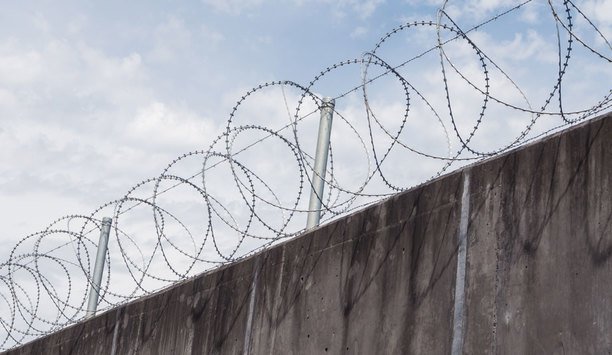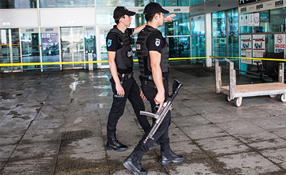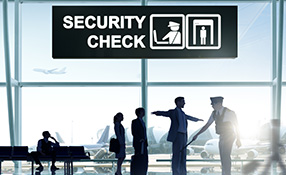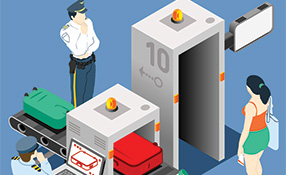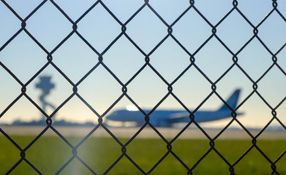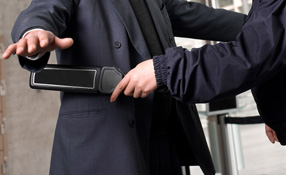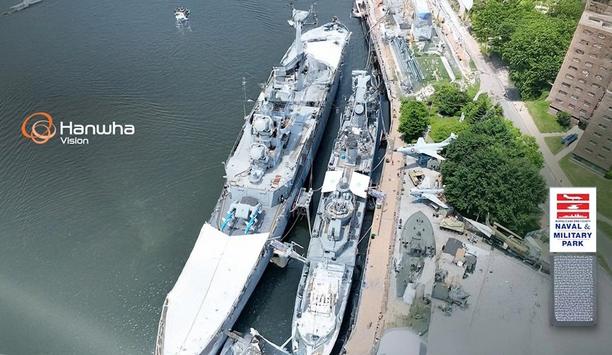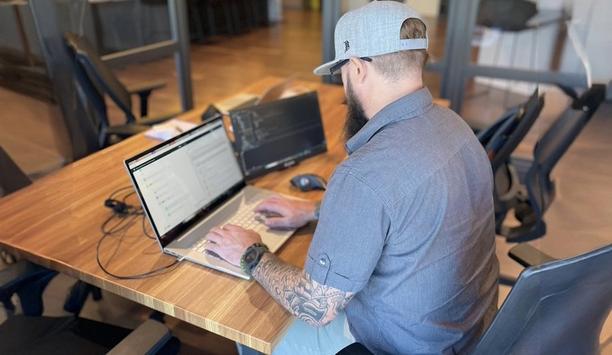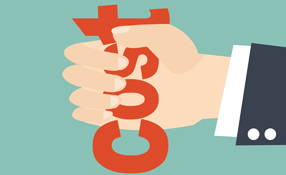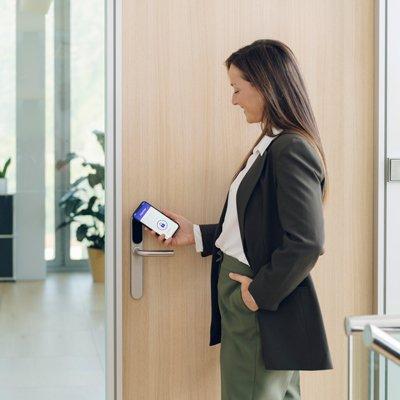 |
Questions surrounding the Germanwings Airbus A320 air crash centre not just on mental health, but on a topic we deal with daily – access control. According to the flight recorder, the co-pilot of the doomed aircraft locked himself alone in the cockpit and deliberately slammed the plane into the side of a mountain in the French Alps, killing himself and 149 people.
Early in the investigation and based on incontrovertible evidence from the flight recorder, Brice Robin (a prosecutor for the city of Marseille) said unequivocally that after Captain Patrick Sonderheimer took a brief comfort break, Co-Pilot Andreas Lubitz locked himself into the cockpit and deliberately took the plane into a descent.
Locked status can be renewed manually
The locking device within the cockpit (which is a simple toggle switch and not located near the door) has three positions: “door open,” “door locked but able to be opened if the correct key combination is entered into a code pad on the outside of the door” and “door locked and not responsive to PIN entry from outside even if the correct code is entered.”
This third status lasts for only five minutes, meaning that if both pilots are incapacitated, other crew members can (after a delay) gain entry. But the locked status can be renewed (manually) any number of times by a rogue individual inside the cockpit, and this is what happened on Flight 9525. The co-pilot was literally untouchable.
Take physical measures to protect pilots
The public will never hear it, but seasoned investigators appeared ashen-faced as they described listening to a recording of the pilot initially asking for re-admission to the cockpit, asking repeatedly in more urgent tones, and finally trying to smash the door down as alarms sounded in the fuselage and passengers screamed. Captain Sonderheimer would have been able to observe Lubitz through a spy hole and would – as we know from the flight data recorder – have noted that Lubitz was breathing normally (not in need of oxygen or overcome by fumes) and deliberately caused the 18-minute descent that ended with an impact at 435 mph into an Alpine valley in southeastern France.
As with so much aviation security, the cockpit precautions can be traced to terrorism, though not necessarily directly to 9/11. Air hijacks began as early as the 1930s, although physical measures to protect pilots from hijackers have only been relevant since the cockpit became a totally distinct part of the aircraft separated from the fuselage by a door.
As with so much aviation security, the cockpit precautions can be traced to terrorism, though not necessarily directly to 9/11 |
Benefit of 20-20 hindsight
With the benefit of 20-20 hindsight, staff on some (though not all U.S. carriers) have noted that if a pilot on their flights requires a comfort break, another member of staff sits with the remaining pilot. Questioned continually by journalists, Lufthansa CEO Carsten Spohr (quite rightly) refused to be cajoled into a knee-jerk promise that this precaution would be implemented on his airline (of which Germanwings is a low-cost subsidiary.) Understandably, there has been little said in public about sky marshals, but it’s a safe bet to think that they must be a rarity on budget short-haul flights. And a sky marshal would have been no help whatsoever here unless he was able to shoot out the door.
Andreas Lubitz’s mental health is not the concern of a media source specialising in the physical security sector. Therefore, let’s analyse the event in terms of the topics that are relevant to us, and these are access control and lone worker protection. But it needs to be said immediately (though not glibly) that it’s inconceivable that two people working in, say a hazardous petro-chemical environment on a “buddy” basis, would leave each other alone for more than a few seconds. Lubitz was in a situation where he could indefinitely lock himself alone into the control area of what was essentially a bomb containing 5,000 imperial gallons of petroleum and 150 people.
Physical security – as a niche area
Let’s (again staying within our niche area of physical security) analyse the event from the perspective of Captain Sonderheimer and using the criteria that security professionals bring to access control. Make three unsuccessful attempts to enter your office using a PIN code or a prox card, and it’s quite common for a PTZ camera to whir round and scrutinise you. Additionally, a facilities manager may address you over the PA/VA and ask if there is a problem. And he’ll offer to assist you if you’re a legitimate visitor. After three unsuccessful strikes at the code pad in a conventional environment, Sonderheimer might have been offered some help.
"At all times, we need to arrive at a viable balance between ease of access and egress with adequate protection of people and assets" |
These parallels have some relevance but they break down and don’t equate to the extraordinary range of threats that are possible on an aircraft. We now know that Sonderheimer had a legitimate (desperate) reason for entering the cockpit. But if a Jihadist had been holding a craft knife to his throat (this was the fate of stewards on 9/11) and his fingers were being held to the code pad for opening the cockpit door, then we would have wanted precisely the opposite outcome and would have been rooting for Lubitz (if sane) to be left to fly the plane alone.
Adequate protection and individual initiative
Given the horror of what has happened, our perspective can become skewed. But the fundamentals of access control remain the same. At all times, we need to arrive at a viable balance between ease of access and egress with adequate protection of people and assets. We should also bear in mind that while no other case is as clear as what we’ve witnessed this week, three plane crashes in the past 30 years have seen pilot suicide advanced as a possible cause by investigators. Above all, we need to ensure that rigid protocol never overrides a flexible approach and individual initiative in responding to completely unexpected circumstances.

